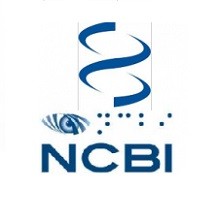
RNA های کوچک هستهای و mRNA ها
چکیده
پیرایشpre-mRNA توسط اسپلایسیزوم، از ویژگیهای مشخص سلولهای یوکاریوتی است که به گروهی از snRNP ها (ریبونوکلئوپروتئینهای هستهای کوچک) وابسته است. پیرایش توسط snRNPها یک مسیر مونتاژ پیچیده دارد که شامل مراحل متعدد است و در مناطق مختلفی از سلول صورت میگیرند که این موضوع توزیع درون سلولی پیچیده آنها را منعکس میکند. جزء حیاتی برای مونتاژ پیرایش توسط snRNP ها، پروتئین SMN است (ژن بقای نورونهای حرکتی). در ارگانیسمهای چند سلولی، SMN در سیتوپلاسم همراه با کمپلکس پروتئینی وابسته به آن عمل میکند تا حلقه هپاتومریک پروتئینهایی به نام Sm را به عنوان اولین مرحله در پیرایشsnRNP مونتاژ کند. کمبود پروتئین SMN منجر به بیماری عصبی تخریب کننده ارثی به نام SMA (آتروفی عضلانی نخاعی) میشود که علت اصلی مرگ و میر نوزادان است و به طور خاص نورونهای حرکتی نخاع را تحت تاثیر قرار میدهد. آن یک پازل طولانی دارد که چگونه کاهش سطح یک پروتئین مورد نیاز برای فرآیندی اساسی نظیر مونتاژ پیرایش snRNP میتواند منجر به شرایطی با چنین قطعیتی ویژه نوع سلول شود. مطالعه حاضر، تحقیقات اخیر را که به نقشهای گسترده متابولیسم RNA برای SMN و پروتئینهای Sm که به آن پیوسته است، اشاره میکنند، برجسته میکند.
پیرایش بیوژنز snRNP (ریبونوکلئوپروتئینهای هستهای کوچک) و نقش ژن بقای نورونهای حرکتی
در سلولهای یوکاریوتی، یک مکانیسم تنظیمی حیاتی در طول بیان ژن، پیرایش Pre-mRNA (پیش ساز mRNA) است که به طور مستقیم از توالی DNA به یک mRNA بالغ آماده برای انتقال به سیتوپلاسم رونویسی شده و پس از آن به فرم عملکردی پروتئینها ترجمه می شود. در طول پیرایش، توالیهای اینترونی حذف شده و توالیهای کد کننده پروتئین حفظ میشوند. پیرایش اغلب پیچیده است که شامل چند مکان پیرایش میباشد و توسط یک ماشین ماکرومولکولی به نام اسپلایسیزوم انجام میشود.
Abstract
The splicing of pre-mRNA by the spliceosome is a characteristic feature of eukaryotic cells, dependent on a group of snRNPs (small nuclear ribonucleoproteins). These splicing snRNPs have a complex assembly pathway involving multiple steps that take place in different regions of the cell, which is reflected in their complex subcellular distribution. Vital to the assembly of splicing snRNPs is the protein SMN (survival of motor neurons). In multicellular organisms, SMN acts in the cytoplasm, together with its associated protein complex to assemble a heptameric ring of proteins called the Sm proteins as an early stage in splicing snRNP assembly. A deficiency of the SMN protein results in the inherited neurodegenerative condition SMA (spinal muscular atrophy), a leading cause of infant mortality specifically affecting spinal motor neurons. It has long been a puzzle how lowered levels of a protein required for a process as fundamental as splicing snRNP assembly can result in a condition with such a definite cell-type-specificity. The present review highlights recent research that points to wider roles in RNA metabolism for both SMN itself and the Sm proteins with which it is linked.
Splicing snRNP (small nuclear ribonucleoprotein) biogenesis and the role of survival motor neurons
In eukaryotic cells, a vital regulatory mechanism during gene expression is splicing of the pre-mRNA (precursor mRNA), transcribed directly from the DNA sequence, into a mature mRNA ready for export to the cytoplasm and subsequent translation to form functional proteins. During splicing, intron sequences are removed and protein-coding sequences are retained. Splicing is often complex, involving multiple splice-site choices, and is carried out by a macromolecular machine termed the spliceosome.
چکیده
پیرایش بیوژنز snRNP (ریبونوکلئوپروتئینهای هستهای کوچک) و نقش ژن بقای نورونهای حرکتی
SMA (آتروفی عضلات نخاعی): یک بیماری موتورنورونی خاص مربوط به بلوغ snRNP.
آیا کمبود snRNP پیرایشگر منجر به نقص در ژن های ضروری موتور نورون ها می شود؟
آیا SMN نقش مجزایی در انتقال RNA در موتور نورون ها دارد؟
شواهدی برای نقش های سلولی متعدد برای پروتئین های Sm و LSm
خلاصه و دیدگاه ها
Abstract
Splicing snRNP (small nuclear ribonucleoprotein) biogenesis and the role of survival motor neurons
SMA (spinal muscular atrophy): a motor neuron-specific condition linked to snRNP maturation
Does splicing snRNP deficiency lead to splicing defects in genes essential for motor neurons?
Evidence for diverse cellular roles for Sm and LSm proteins
Summary and perspectives
- ترجمه فارسی مقاله با فرمت ورد (word) با قابلیت ویرایش، بدون آرم سایت ای ترجمه
- ترجمه فارسی مقاله با فرمت pdf، بدون آرم سایت ای ترجمه
